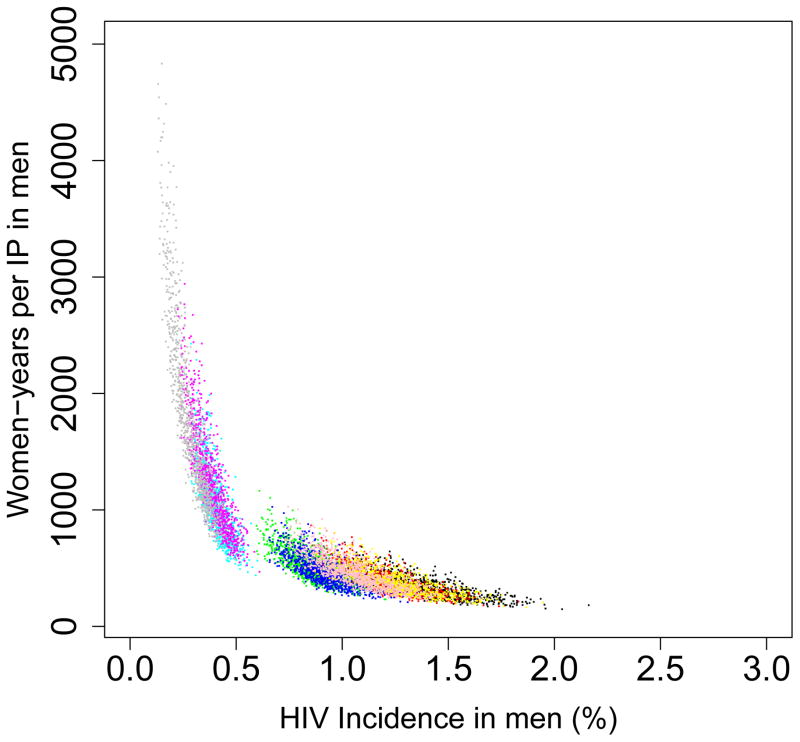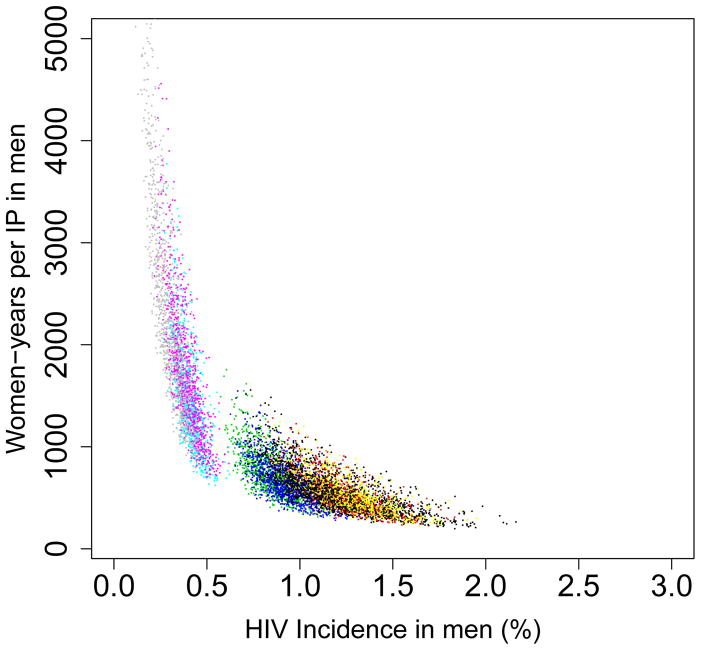Figure 6. Estimates of the province-specific long-term (i.e., over a decade) efficiency of microbicide-based interventions in reducing HIV transmission in men.
Long-term efficiency is shown in terms of the number of women-years on microbicides that would be necessary to prevent one HIV infection in men. Long-term efficiency increases as the number of women-years needed to prevent one HIV infection decreases. Estimates are based on the results of an uncertainty analysis of the geospatial meta-population transmission model. (A) Results are based on assuming high adherence (where high adherence is defined as in the CAPRISA trial 5,9; i.e., microbicides are used in >80% of sex acts). (B) Results are based on assuming moderate adherence (where moderate adherence is defined as in the CAPRISA trial 5,9; i.e., microbicide are used in 50–80% of sex acts). Color codes shown in (A) and (B) represent: Mpumalanga (green), Eastern Cape (red), KwaZulu-Natal (black), Limpopo (cyan), Free State (red), North West (yellow), Northern Cape (magenta), Gauteng (pink) and the Western Cape (gray).


